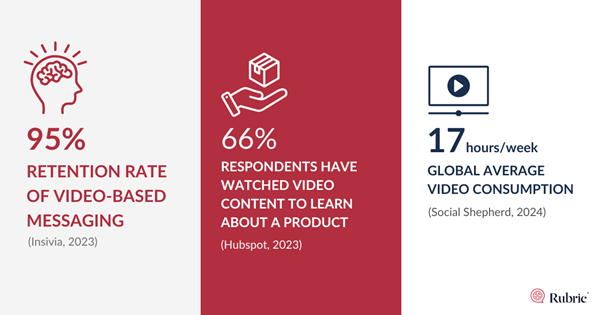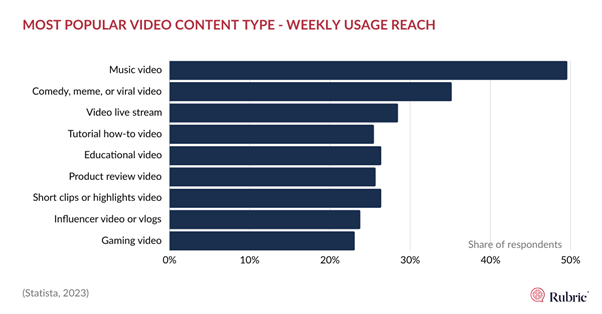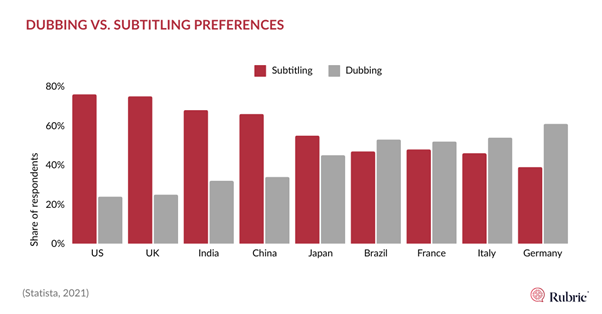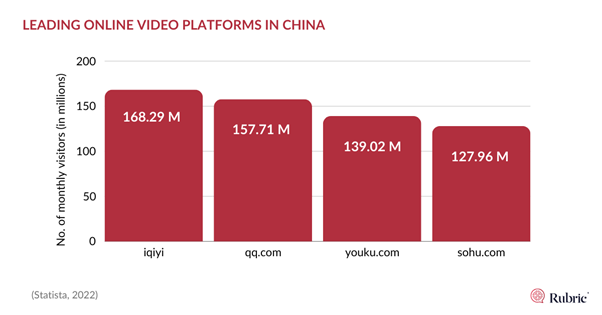
Video is here to stay, but there’s more to video localization than running it through one of the many online AI localization platforms.
Here are four important questions to ask to make sure your videos hit the mark.
1. Is video right for my global business?
Video is a hugely popular content format. It’s estimated that video content now reaches around 92% of internet users worldwide, and on average each person watches a huge 17 hours of online video a week.
And video works! Video-based messaging has a retention rate of nearly 95%. Compare that to a measly 10% for text-based messaging.

If you think the popularity of video is down to cute cat videos or comic memes going viral, you have a point. But how-to videos, tutorials and product reviews are also extremely popular. According to a recent HubSpot survey, 66% of respondents watch videos to learn about a product.
If your business is B2C then video is likely to be a must-have content channel.

2. What preferences do my target markets have?
Video offers a lot more options for localization than most other content types.
How should the audio be localized? Should it be dubbed with a localized voiceover? Is lip-sync dubbing required? Or will subtitles suffice? How should on-screen text be handled? What about imagery and iconography?
Audiences in different regions have different localization preferences. While some countries prefer their videos dubbed, others prefer subtitles. As shown in the chart below, Germany, Brazil, and France prefer watching dubbed foreign content whilst India, China, and Japan prefer subtitles.

Consider internet speed and device preferences to ensure your audience is able to download or stream your videos.
Research the preferences of your target markets to learn what they prefer.
3. Is AI a good fit for my target languages?
AI is huge in the audio/video space. The technology is evolving constantly and you can use AI tools for almost every part of the video content creation and localization process. AI can offer significant cost savings and lightning-fast turn-around times, but is AI right for your video content?
If you’re considering AI-generated voices or avatars then be aware that the variety available in English-speaking markets outstrips that in all other markets. And when languages are supported there may not be a variety of genders, ages, accents or dialects available.
Consider Amazon Polly, one of the leading speech-to-text synthesis providers.
As of July 2024 Amazon Polly offers 27 English voices in eight accents or dialects—American, Australian, British, Indian, Irish, New Zealand, South African and Welsh. English voices are also the only ones to offer child’s voices and generative options.
In contrast, despite Spanish being an official language in 20 countries, only three variants of Spanish are available—American, European and Mexican.
Yet Korean only has a single (female) voice available, whilst Hindi is the only Indic language supported (with two female voices).
Languages that are not supported at all include Vietnamese, Thai, Bulgarian, Slovak and Slovenian to name just a few.
This landscape means that, if you’re considering AI, you need to consider the support and breadth of options available and which platforms best support your needs. The quality and accuracy can vary from one platform to another and can change over time as technology evolves.
If the AI voices for a language lack inflection and emotional cues they may sound monotonous, choppy or inauthentic. This can create a disconnect with the audience and serve to alienate them from, rather than connecting them to, your brand. If you find this is the case it maybe that human voiceover artists alone can offer the vocal variety, subtleties and tailoring you require.
4. What content channels are best?
And then there’s the question of which content channels to use.
Factors such as censorship and regional bans on platforms can affect the distribution of your video content. For example, YouTube is banned in China and Iran. Russia and Pakistan have also temporarily banned or censored YouTube in the past.
To effectively enter a market like China you would need to use a popular video platform.

But as well as outright bans there are other potential rules and regulations around posting content in each market. Some platforms limit where content can be uploaded from, or how corporate accounts are administered.
Consider accessibility laws such as those in Spain which require video streamers to provide captions, audio descriptions, and sign language translations.
Conclusion
Overall, video content is a hugely effective form of communication and is likely ignored at your peril.
But video localization is complex. Take the time to learn more about the audience, environment, technology and content platforms in each market to ensure your content hits the mark.